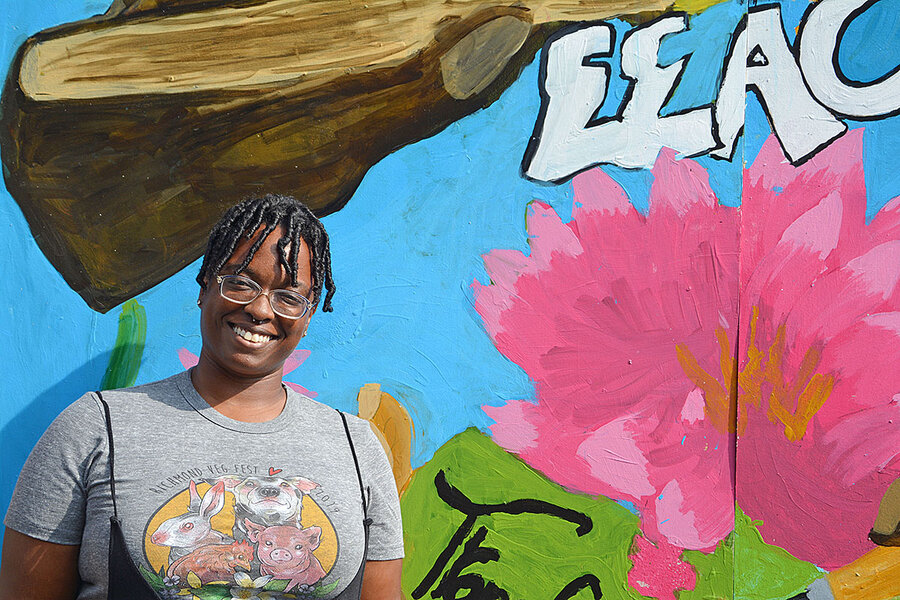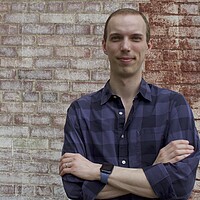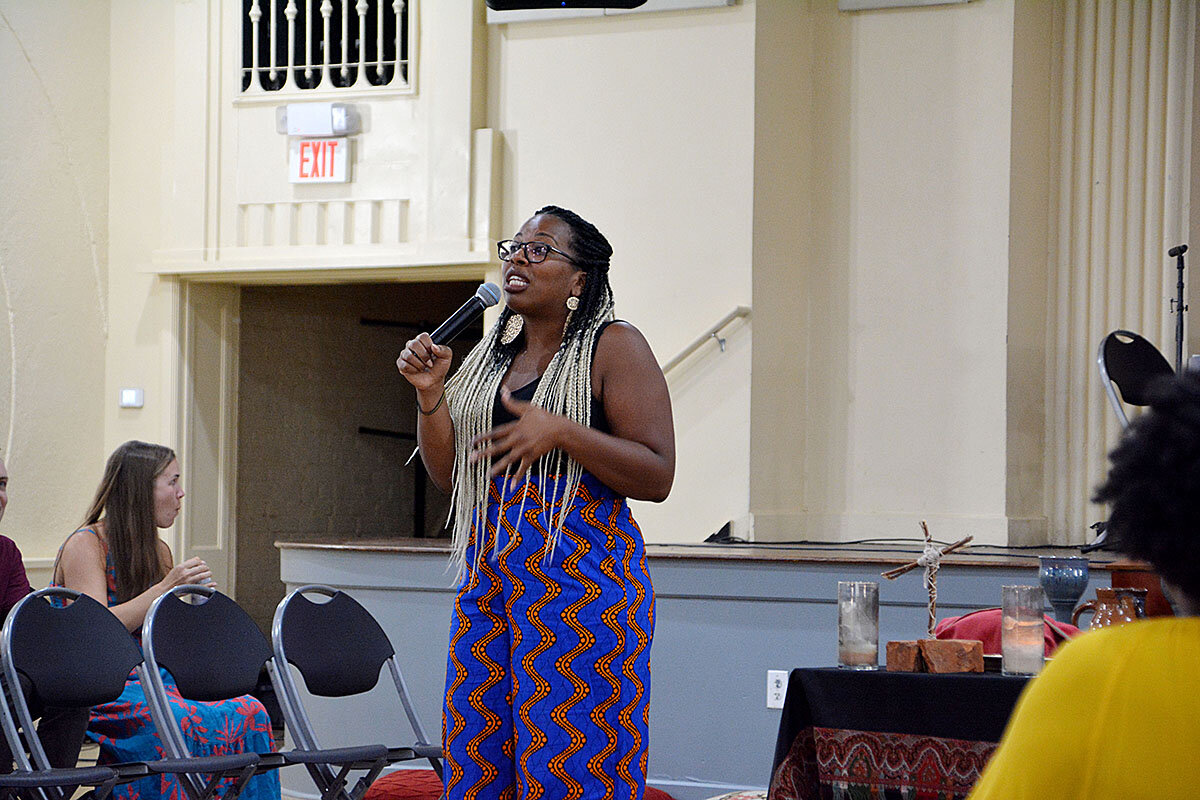Multicultural churches are on the rise. Here’s why.
Loading...
| Richmond, Va.
Toya Obasi sacrifices something each Sunday when she goes to a church where people don’t all look like her. Ms. Obasi is African American. Her church is not. Instead, East End Fellowship, based in Richmond, Virginia, is split almost evenly between white people and people of color. That’s no accident.
“It’s like more of a sacrifice than I think people really realize,” says Ms. Obasi. “[The black church is] literally the only cultural thing that I have.”
Ms. Obasi loves the community at East End – so much so that after years as a congregant she now works as church administrator. But their work isn’t always easy. Historically an African American area, Richmond’s East End includes housing projects and new high-end homes. The church is home to both gentrifiers and gentrified.
Why We Wrote This
Church may be one of the last places to integrate. But what does it take to be truly inclusive? Some congregations are finding it requires an examination of doctrine and worship – and a willingness to be uncomfortable.
With racial conciliation central to its mission, East End often confronts a challenge facing churches nationwide: integrating worship cultures that have been separate for centuries. Historically segregated, American churches are growing more diverse. Still, many ministry leaders acknowledge that being multicultural requires more than just being multicolored. True inclusivity, they say, takes honesty, intentionality, and often a commitment to being uncomfortable.
This November, church leaders from around the country will meet in Dallas for the nation’s fourth triennial multiethnic church conference. Hosted by Mosaix Global Network, a group promoting church diversity, the conference will announce a rising share of multiethnic churches and focus on how to handle that rise responsibly.
“People are no longer content to segregate themselves, certainly in worship,” says Pastor Mark DeYmaz, one of Mosaix’s founders. “All pastors and ministry leaders are doing in churches that are remaining stubbornly segregated is managing decline.”
Achieving integration, but not equity
When Michael Emerson, provost of Chicago’s North Park University, first began researching multiethnic churches in the late 1990s, they made up little more than 6% of American ministries. Since then, he says the share of churches no more than 80% one race – his threshold for “multiethnic” – has increased. He expects the level of multiethnic churches to reach around 20% this fall.
America’s growing racial diversity makes homogeneous churches less likely due to shifting demographics, but it also means people seek out spaces that are more diverse, says Baylor University sociology professor Kevin Dougherty, one of Dr. Emerson’s co-researchers. If you interact with people who don’t look like you at the park, he says, you’ll expect the same in the pews.
Dr. Emerson says the recent rise shows some progress – churches were once so segregated that people didn’t think different races could worship together. But diversity doesn’t necessarily signal equity.
Multiethnic churches often involve “people of color sacrificing their cultural heritage to worship in ways that look more white,” says Dr. Dougherty. “Regardless of the percentage of whites in a multiracial congregation … white cultural tradition seems to often dominate.”
Those most skeptical of integration, says Dr. Dougherty, tend to be African Americans, who fear assimilation. For the Rev. David Wright, executive director of Boston’s Black Ministerial Alliance, that skepticism extends to the very way multiethnic churches are measured. Part African American and part Afro-Caribbean, he says his church wouldn’t be counted as multiethnic because the congregation is mostly “black.”
“The definition of multiethnic having to include white people all the time,” says Mr. Wright, “is symptomatic of the problem with the concept of the church in America: Everything defaults to a standard of white.”
To Mr. Wright, integration is as much about structure as it is skin color. Mainstream Christianity in America, he says, was long complicit in racism, starting with slavery. This led to fundamental differences in church focus. White churches emphasized personal salvation; black churches valued spiritual and physical freedom.
“Liberation of the body as well as the soul – this is, I think, one of the defining factors of this thing we call the ‘black church,’” says Mr. Wright. “It’s never been just about my personal salvation and going to heaven, but there’s always been that social justice part.”
Churches that promote inclusivity, says Mr. DeYmaz, are also challenging centuries of Christian theology. Regarding race, he says, seminaries often teach two things: New Testament churches were segregated, and the best way to start a new church is to target a homogeneous group of people. Both of these he disputes.
“What that looks like to someone ... on the outside looking in,” says Mr. DeYmaz, is that “we all have our own gods. … It looks like multiple religions.”
He connects that perception to shrinking congregations. If you say God loves all people, but your church is all white, he says, then that message looks contrived – especially to younger generations.
“[Young people are] growing up in integrated environments,” says Mr. DeYmaz. “They’re working in integrated environments. They’re living in integrated environments. They’re not going to accept going to segregated churches.”
‘Relationships hold the church together’
To address these problems, East End Fellowship has developed new liturgy, new worship styles, and new traditions, for more than 10 years, says church elder David Bailey.
On Sunday, the church meets at the Robinson Theater, a community arts center within walking distance for most of the congregation. Like the church itself, the theater is a “third space” – neutral ground between the area’s mostly separate black and white neighborhoods.
Staff lives in the community it serves. Members say they often offer their homes and cars to other members in need. Living so close means they have no other choice. If there’s a problem, they can’t ignore it.
Sunday service is scheduled for 4 p.m. Hip hop plays pre-service, as do children. When the nearly 200-person congregation settles, a white and black band leads worship. Pastors preach from the floor, not a stage.
During the week, smaller groups meet in each other’s homes. They break bread – well, usually pizza – while discussing Sunday’s service and whatever’s on their mind. Relationships hold the church together, says Associate Pastor Chris Lee.
Most American ministries, Mr. Bailey says, value “bigger budgets and bigger buildings.” Rooting itself in an area where poverty is common means East End’s budget is small. But Mr. Bailey says they define success differently.
Ms. Obasi and some others from the church sang at an interfaith gathering a night before the 2017 Unite the Right rallies in Charlottesville. Watching the protests the next day, she says she wanted to be angry, but she couldn’t – because of her time at church.
“I’ve had too many positive interactions with white men here specifically for that one thing to cancel them all out,” she says. “And I’m so grateful for that because that could have broken me and it didn’t. I was like, ‘those guys look like my buddies.’ I can’t hate them. They’re like my friends.”







